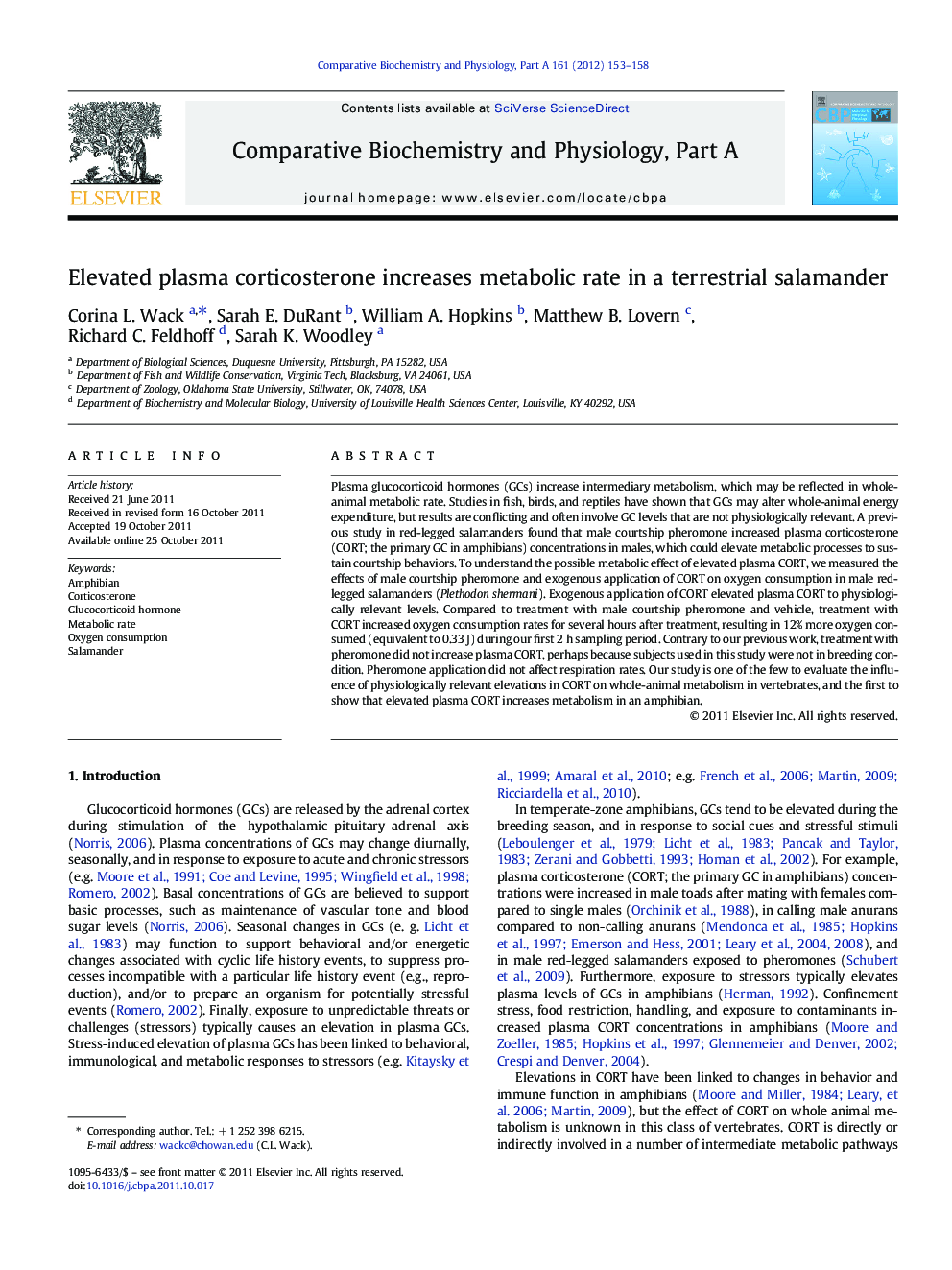| Article ID | Journal | Published Year | Pages | File Type |
|---|---|---|---|---|
| 1972679 | Comparative Biochemistry and Physiology Part A: Molecular & Integrative Physiology | 2012 | 6 Pages |
Plasma glucocorticoid hormones (GCs) increase intermediary metabolism, which may be reflected in whole-animal metabolic rate. Studies in fish, birds, and reptiles have shown that GCs may alter whole-animal energy expenditure, but results are conflicting and often involve GC levels that are not physiologically relevant. A previous study in red-legged salamanders found that male courtship pheromone increased plasma corticosterone (CORT; the primary GC in amphibians) concentrations in males, which could elevate metabolic processes to sustain courtship behaviors. To understand the possible metabolic effect of elevated plasma CORT, we measured the effects of male courtship pheromone and exogenous application of CORT on oxygen consumption in male red-legged salamanders (Plethodon shermani). Exogenous application of CORT elevated plasma CORT to physiologically relevant levels. Compared to treatment with male courtship pheromone and vehicle, treatment with CORT increased oxygen consumption rates for several hours after treatment, resulting in 12% more oxygen consumed (equivalent to 0.33 J) during our first 2 h sampling period. Contrary to our previous work, treatment with pheromone did not increase plasma CORT, perhaps because subjects used in this study were not in breeding condition. Pheromone application did not affect respiration rates. Our study is one of the few to evaluate the influence of physiologically relevant elevations in CORT on whole-animal metabolism in vertebrates, and the first to show that elevated plasma CORT increases metabolism in an amphibian.
